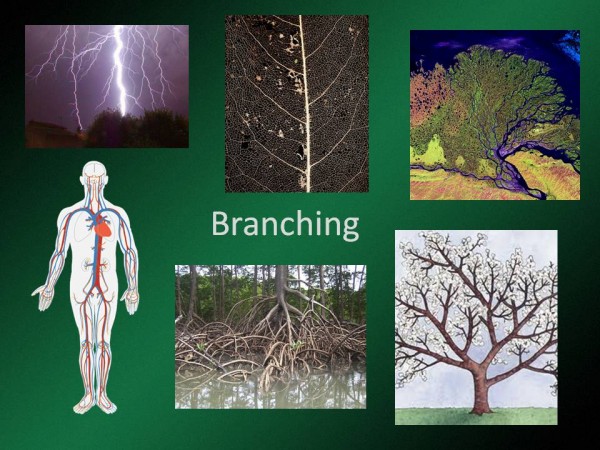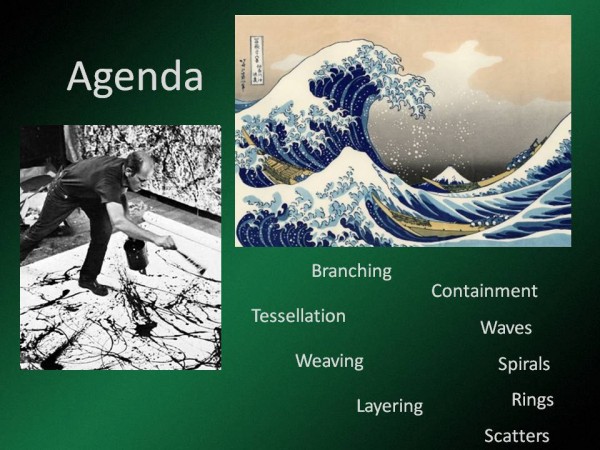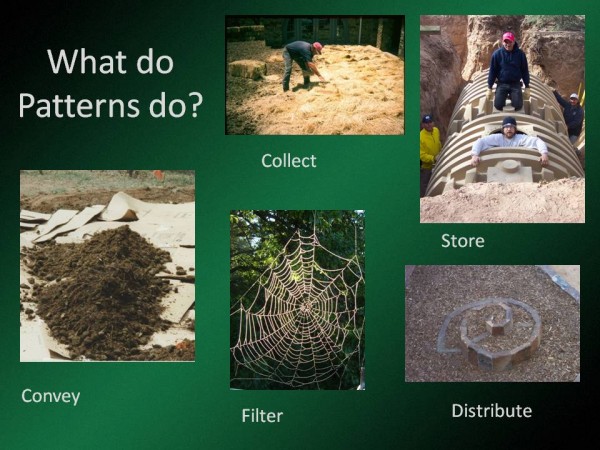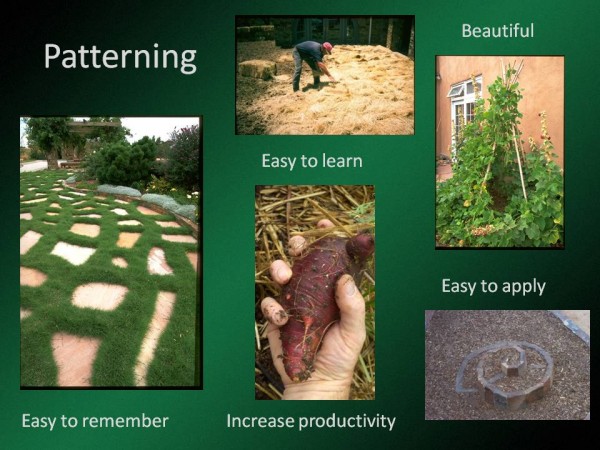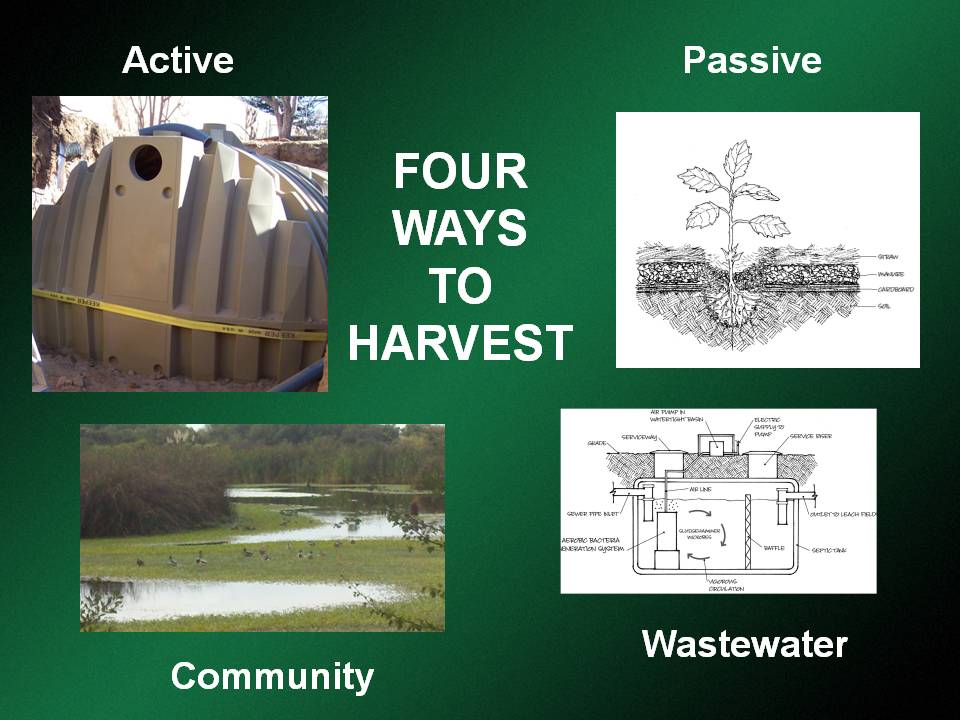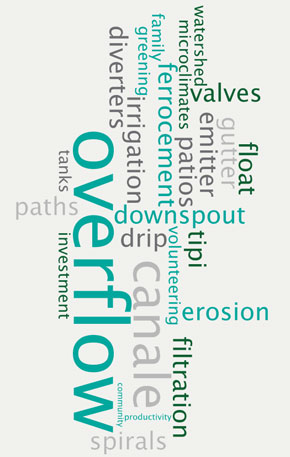The PermaDesign Weblog, with Nate Downey and Melissa McDonald!
SLIDE 23: The Main Branching Line
Here is the branching pattern at work (bottom left of slide).
02/23/2017 | (0) Comments
SLIDE 22: Greywater Plan
If you let your eyes follow the greywater pipe that run from the top right of this slide to the bottom left of this slide (dark line), you will see how the branching pattern is an important part of greywater harvesting.
02/22/2017 | (0) Comments
SLIDE 21: Branching
Branching occurs throughout nature, and it is a pattern we mimic in our ecological landscape designs.
02/21/2017 | (0) Comments
SLIDE 20: Agenda
I typically do not have time (in my hour-long presentations) to go through every pattern known to humanity, but I typically discuss branching, tessellation, weaving, layering, and containment with brief references to waves, spirals, concentric rings, and the scatter pattern. In this lecture, I focused on branching, tessellation, and three forms of containment (cisterns, waffle gardens, and wicking rain-gardens)
02/20/2017 | (0) Comments
SLIDE 19: What Do Patterns Do
Patterns are also very important because they collect, convey, store, filter, and distribute energy. In the case of water harvesting, we see these five verbs at work with respect to precipitation, but we can also see patterns in these relationships with other forms of energy both in nature and with respect to human systems and technology.
02/19/2017 | (0) Comments
SLIDE 18: Patterning
Since every site is different, every client is different, and every landscape designer is different, I like to use permaculture’s “patterning” concept to approach the teaching of what I do. Patterns found in nature are easy to learn, easy to remember, easy to apply, and they increase the water harvesting potential of the site. They also contribute to the aesthetic quality of the land—they’re beautiful! If designers understand the power of natural patterns, they can begin to design ecological, functional, land long-lasting landscapes that inspire the soul and are effective at attaining a client’s goals.
02/18/2017 | (0) Comments
SLIDE 17: Four Ways to Harvest
In my talks, public presentations, and interviews, I almost always explain that there are four forms of water harvesting, and my lecture at the Association of Professional Landscape Designers was no different in this respect. Active water harvesting is the form that pumps water out of a water storage tank called a cistern. Passive water harvesting stores water in the soil. Wastewater harvesting recycles greywater (from clothes washing machines, bathroom sinks, showers, etc.) and blackwater (from kitchen sinks, dishwashers, and toilets). Community water harvesting deals with the use of stormwater on a community-wide scale.
02/17/2017 | (0) Comments
Greywater Action
Greywater Action has helped thousands of people learn about and connect to greywater. It has an excellent website with easy guides to explore greywater reuse, rainwater harvesting, and composting toilets. Based in California, the group often has workshops that teach people about greywater systems, costs, codes, irrigation systems, and plant friendly soaps.
02/14/2017 | (0) Comments
SLIDE 16: Efficiency
Here’s a better look. Even with only 80% efficiency the two surfaces have the potential to harvest close to an acre foot of water per year.
02/06/2017 | (0) Comments
Santa Fe Honored as Desert Lab Rat
From my latest column:
At a Jan. 5 press conference announcing that Santa Fe had received a distinct national honor for its approach to stormwater management, Mayor Javier Gonzales juxtaposed 20th-century goals for urban-runoff management with the city’s current, science-based approach. By recalling how his father, George Gonzales (Santa Fe’s mayor in the late '60s and early '70s), was trained to divert stormwater as quickly as possible away from the built environment in order to protect buildings, roads, and bridges, Javier explained how he wants “to reverse that trend and slow (runoff) down as much as possible in order to create another source of wet water… and have as much water security as we possibly can.”
02/06/2017 | (0) Comments


